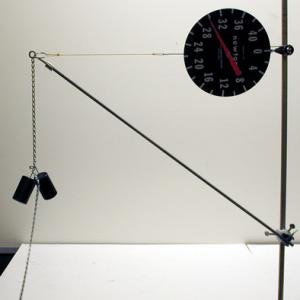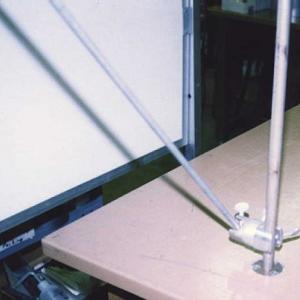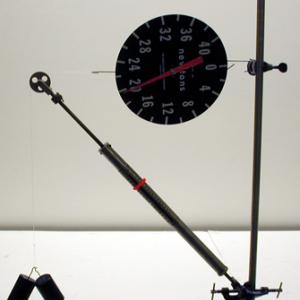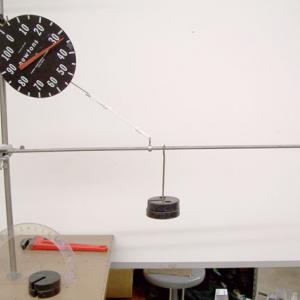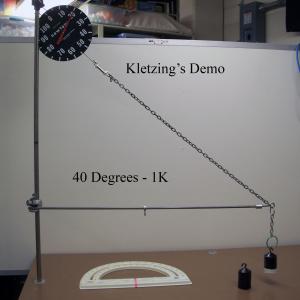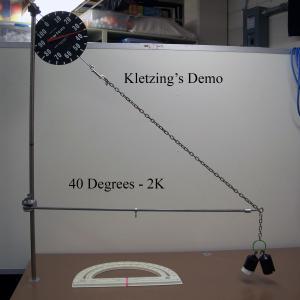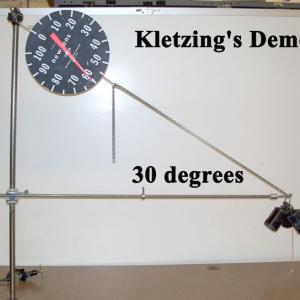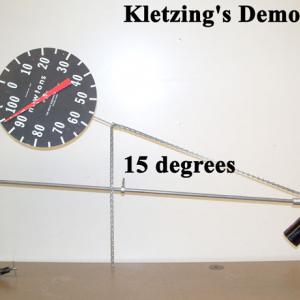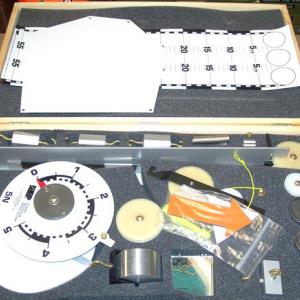College of Liberal Arts & Sciences
1J40.70 - Crane and Crane Boom
Use the spring loaded crane boom if you want to measure the force of compression on the crane. If you don't want to measure this force use a solid rod as the crane boom. Setup is determined by the component you wish to measure.
A version of the boom with a pulley on the end.
A version of the crane where the mass can be moved to different places on the horizontal arm and the tension can be monitored.
Kletzings demos are designed to go with the "clicker" questions he has. For the 40 degree angle, there is a 5 newton loading for the mass of the boom and chain. Then for each 1 K mass added the scale reading should go up by 15 newtons.
For the 30 and 15 degree demo angles the concept is to show that if you leave the mass at the end of the boom the same, but decrease the angle, the tension in the chain goes way up.
The Blackboard Mechanics set has scales with protractors built in that can be used on a magnetic black board or white board.
The tension protractors can be used when making a small version of the crane boom as long as the total mass is less than 1 kg.
- Frank A. Smith Jr., "Biomechanics Using a Crane Boom", TPT, Vol. 16, #4, Apr. 1978, p. 220.
- Thomas B. Greeslade Jr., "Model Crane (Photo)", AJP, Vol. 70, #6, June 2002, p. 638.
- D. Colson, C. J. Lapp, J. A. Eldridge, "Experiment III", 1936 Univ. of Iowa Physics Laboratory Manual, p. 10.
- Central Scientific Company, "Experimental Crane Boom", p. 23.
Disclaimer: These demonstrations are provided only for illustrative use by persons affiliated with The University of Iowa and only under the direction of a trained instructor or physicist. The University of Iowa is not responsible for demonstrations performed by those using their own equipment or who choose to use this reference material for their own purpose. The demonstrations included here are within the public domain and can be found in materials contained in libraries, bookstores, and through electronic sources. Performing all or any portion of any of these demonstrations, with or without revisions not depicted here entails inherent risks. These risks include, without limitation, bodily injury (and possibly death), including risks to health that may be temporary or permanent and that may exacerbate a pre-existing medical condition; and property loss or damage. Anyone performing any part of these demonstrations, even with revisions, knowingly and voluntarily assumes all risks associated with them.
